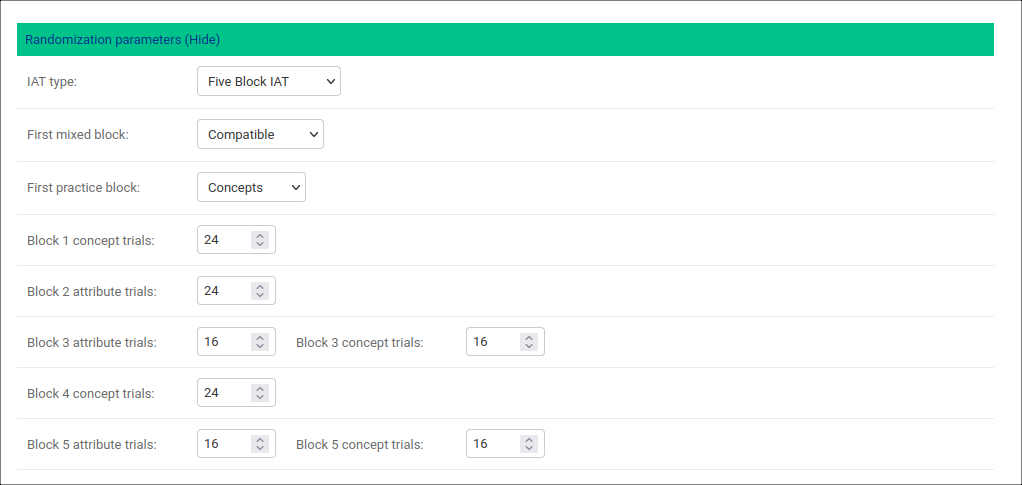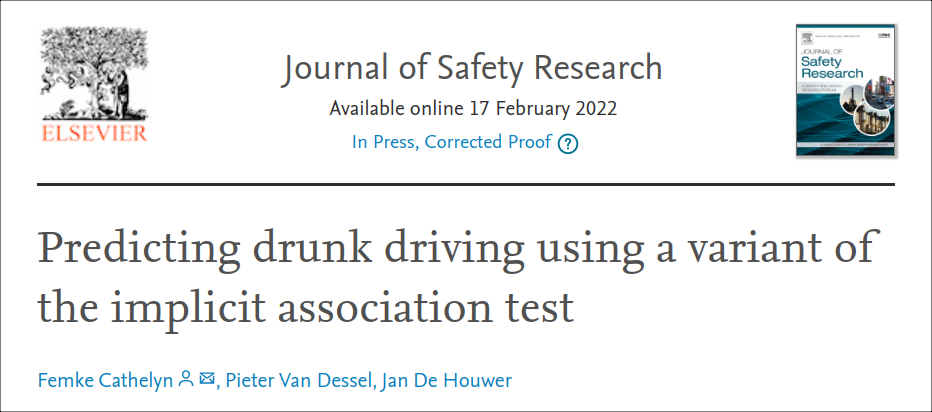Build your own Implicit Association Test
You’ve heard about the Implicit Association Test (IAT) and want to use it in your research? Wondering where to start? Look no further, with Cognition Gate you can build one in minutes.
This short tutorial shows you how, using an interesting example from a recent study.
An implicit measure of drunk driving
A team of researchers at Ghent University (Belgium) recently demonstrated that the IAT can be used to identify individuals who are at risk of drunk driving.
In essence, they used the IAT to capture autobiographical knowledge of past drunk driving behavior (which is known to be a good predictor of future drunk driving behavior).
How did they do it?
Like any IAT, the autobiographical IAT requires respondents to complete a series of classification tasks. To detect (past) Driving Under the Influence (DUI), Femke Cathelyn and her colleagues used the following classification tasks:
- First block of 24 trials: Classification of statements referring to DUI (e.g., “I have driven while being drunk”) vs. non-DUI (“I have always driven while sober”), by pressing a left key (F-key) and a right key (K-key) on the computer keyboard.
- Second block of 24 trials: Classification of statements which are logically true (e.g., “I’m doing a computer task”) or false (e.g., “I’m climbing a mountain”), using the same response keys.
- Third block of 32 trials: Classification of all 4 types of statements, presented in an intermixed manner, using the same response assignments as in Blocks 1 and 2.
- Fourth block of 24 trials: Classification of statements referring to DUI vs. non-DUI, this time with reversed response assignments.
- Fifth block of 32 trials: Classification of all 4 types of statements, again presented in an intermixed manner, now using the response assignments of Blocks 2 and 4.
By examining the difference between the speed of responding and accuracy in Blocks 3 and 5, one can learn about past DUI of a respondent. If a respondent is relatively fast and accurate in Block 2 in comparison to Block 4, this indicates past DUI.
Set up your own autobiographical IAT
Sounds interesting? You can replicate their work quickly and easily with Cognition Gate. All you need to do is this:
- Upload 4 lists of statements
- Add these statements to the IAT template
- Add response labels for each block of trials (optional)
- Specify the number of trials you want in each block
- Add instructions for your respondents
- Send an (automatically generated) URL to your respondents
- Download your data
Let Cognition Gate do its magic

The IAT requires a well-controlled presentation of stimuli across different blocks of trials. Cognition Gate takes care of that behind the scenes, in full compliance with the latest recommendations of Anthony Greenwald, the creator of the IAT, and a team of IAT experts.
Collect (lots of) data
Congratulations: You’ve just built your first (science-grade) IAT! You can now speed up data collection by using services like Mechanical Turk or Prolific. And yes, integration with these platforms is straightforward and easy. Have fun analyzing and sharing your findings!




